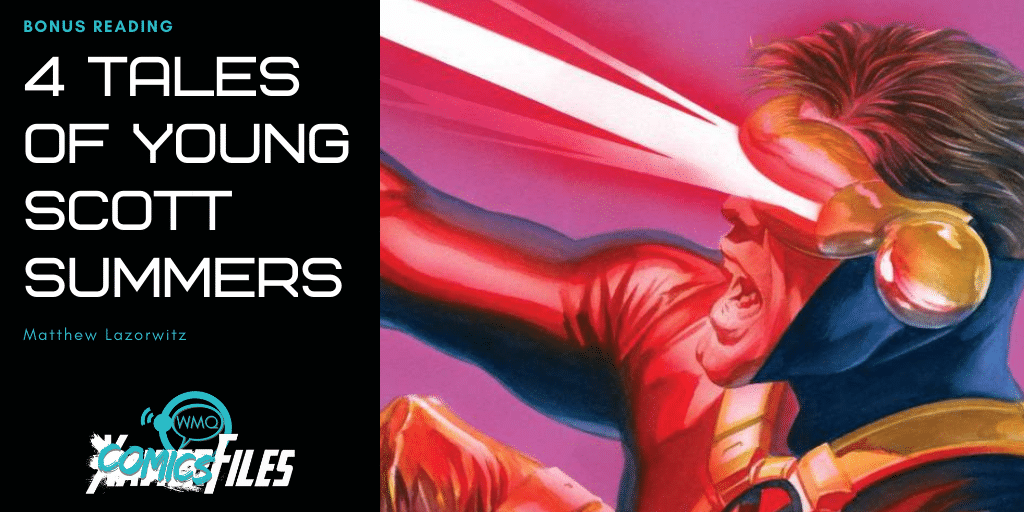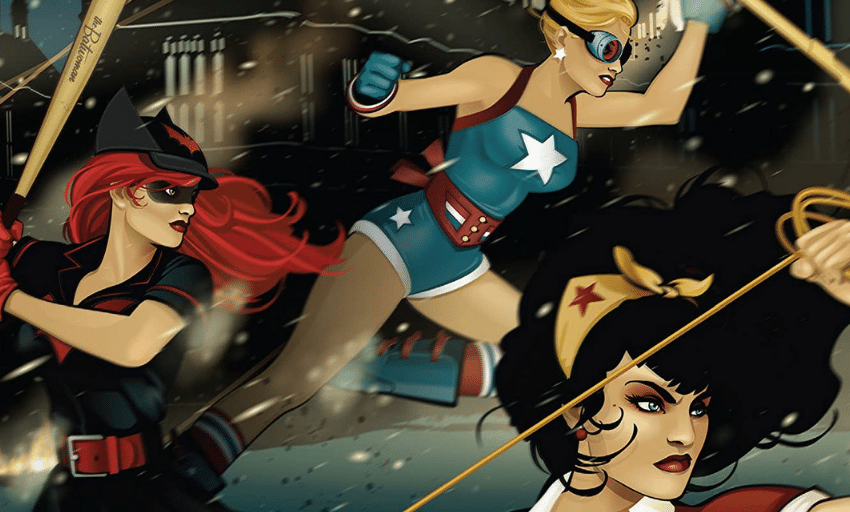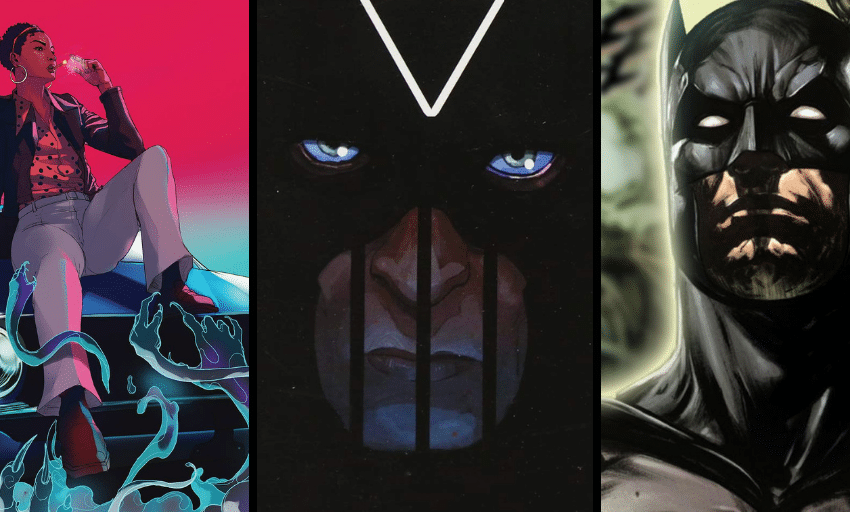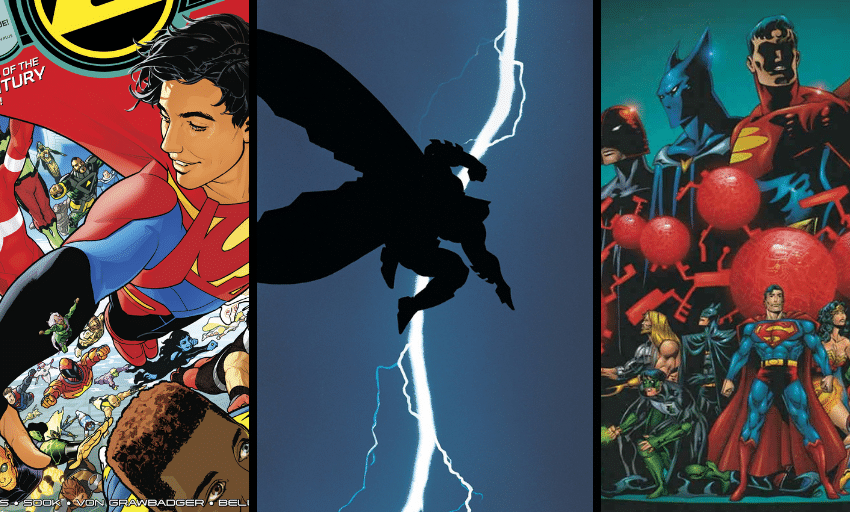I love Scott Summers. Cyclops has always been my favorite X-man, even when he was at his squarest back in the ’90s cartoon. I don’t know why. Maybe it’s because I’m pretty square myself. “X-Men #30,” the wedding of Scott and Jean Grey, is a favorite X-Men issue of mine. I can quickly rattle off the completely ridiculous Summers family tree. I would have worn one of those “Cyclops Was Right” shirts after “Avengers Vs. X-Men” with no irony.
As a matter of fact, I am a shameless Cyclops apologist. But if there is someone I would bow to in all due deference to their Cyclops knowledge, it would be X-Pert Jay Edidin. And this week, Jay’s long-anticipated one-shot, “X-Men: Marvels Snapshot” #1, came out, following Scott’s youth and seeing the birth of the Marvel Universe through his eyes. So let’s talk about four interesting stories featuring a young Cyclops.
Cyclops #1

After the all-ages “X-Men: First Class” series wrapped up, it seemed like Marvel had a couple issues left floating around that turned into a series of one-shots. One was for Iceman and Angel, one for Magneto, one for Marvel Girl and one was for Cyclops. They’re all pretty fun, but the Cyclops one, “The Bicycle Thief or: How Cyclops Got His Groove Back,” is gold.
A young Scott is out and about, worrying about, well, worrying and being too serious. To anyone who deals with anxiety while also being hopelessly introverted, this is not in the least bit unfamiliar. But the day is not going to let Scott just brood, because he runs afoul of villains. But not just any villains. Great and mighty villains. Yes, Cyclops must fight … the Circus of Crime and Batroc the Leaper!
Yes, the villains are far outside the main X-Men rogues gallery, and they suit the tenor of the story, which is basically Cyclops chasing them and learning to lighten up a bit. You’d think Scott, who is known for being serious, wouldn’t fit into a story that is so wacky, but like Batman in the animated “Brave and the Bold,” he’s the calm center of a storm of insanity, including a Batroc whose phonetic French accent is as broad as any Stan Lee-written story.
Lee Black, whom I’m not familiar with from any other work, writes a fun Cyclops, who starts out as broody and by the end is able to relax, at least a little. He captures the voice of the character and an affection for the period of X-Men the story is set in, using little Easter eggs like the Coffee A Go-Go and its waitress Zelda that are gold for X-fans. The art, by Dean Haspiel, fits the story — cartoony but with a strong narrative sense that keeps the action flowing. This isn’t the most consequential story in Cyclops history, but if you’re unfamiliar with the character, it will give you a great place to start.
X-Men: Season One

Of the properties crafted by Stan Lee and Jack Kirby, the X-Men are probably the least remarkable for their Silver Age tales. Fantastic Four and Thor stand as some of the great runs in the history of comics, but the X-Men don’t take off until the Bronze Age and the Claremont era. So it’s interesting that, when Marvel retold those original stories with a modern lens in the graphic novel series “Season One” in the early 2010s, the X-Men came out as far and away one of the strongest, and while “X-Men: Season One” is narrated by Marvel Girl, and presents one of the best Jean Grey stories of all time, it sheds a strong light on young Cyclops.
There is so much to love about “X-Men: Season One.” There have been a lot of stories written in and around those early X-Men adventures, from the charming “X-Men: First Class” to the befuddling “X-Men: The Hidden Years.” But for a streamlined, character-based story that gives the reader a feeling for what these characters were like and what they will grow into, “Season One” stands as my favorite. Writer Dennis “Hopeless” Hallum captures the voices of all the X-Men perfectly, and artist Jamie McKelvie, with inker Mike Norton and colorist Matthew Wilson, is at the top of his game.
With Jean being the point-of-view character for much of the book, there is a strong contrast drawn between the two young men who are interested in her: the awkward Cyclops and the slick and confident Angel. But more than that, for Scott, it’s the story of him learning to find his confidence. Scott is full of self-doubt when it comes to asking Jean out, using his powers and leading the X-Men. And his evolution is slow over the course of the book. He obsessively trains in the Danger Room and doesn’t go out with the other X-Men. He makes mistake after mistake during combat, even though there are moments where the Cyclops readers know comes through.
In the end, though, it’s Jean who helps him. Trapped in the Danger Room beneath rubble after Magneto attacks the mansion, Jean talks to Scott. Scott has a moment of clarity, analyzing Magneto’s attacks and Jean’s problems, and then starts to wallow, only for Jean to call him on it. And with the right nudge, Scott comes out of his shell and starts to lead the X-Men, with more than a little help from Jean.
In the Shadows (What If? #90)

So, we all know the main Marvel Universe, Earth-616, has its problems. Between the standard Earth problems, superhero civil wars, secret invasions and the mere existence of noted neocon superhero U.S. Agent, it can be a pretty dark place. And yet, if Marvel’s “What If?” series are to be believed, this is somehow the best of all possible worlds, since even worlds that start off with a premise that would theoretically make the lives of the featured characters better always seem to end with a pile of bodies or characters maimed and traumatized worse than they are on 616. And that is definitely the case for “In the Shadows,” from illustrator James Daly and writer Todd DeZago, where the premise “What if Cyclops and Havok got to be raised by their parents?” turns into a horror show.
I’m not sure if “What If?” #90 qualifies as one of the great Cyclops stories, but it certainly qualifies as one of those “What If” issues that you never forget once you’ve read it. As with “X-Men: Season One,” the issue isn’t narrated by Scott but by his brother, Alex. Raised together with Scott since their dad, Chris, was able to avoid the Shi’ar craft that nearly destroyed their family plane, Alex is jealous of his confident, cool older brother. Scott as we see him at the beginning of this issue is the popular kid that Scott in 616 never became.
But trauma takes many forms, and while Scott doesn’t have the loss of his family or the brain injury caused by the bad landing from the plane, he has another set of traumas. He has terrors of the alien ship he saw and is afraid of being different. And when his mutant power manifests, things get worse. Even though this Cyclops can control his powers, he fears them. Alex, meanwhile, has a devil whispering in his ear: Dark Beast has come to see if the brothers who he knew in his own world can be his pawns.
The story ends on a bleak note, with Scott’s trauma overwhelming him and Alex becoming the agent of Dark Beast. The final panel stuck in my head for the 20 years since I first read this issue, and I won’t spoil it here, but … yeah. It’s one of the harsher endings to a “What If?” I can recall, and that’s saying quite a bit.
Champions #12

After “Avengers Vs. X-Men,” when a Phoenix-possesed Cyclops killed Professor X and then became a wanted terrorist, king of the passive aggressive move Hank McCoy, the Beast, went back in time and brought the original five X-Men back from the past so they could see what they will become in the hopes that would snap Cyclops out of it. Not only did that not work, but the young X-Men decided to stay in the present to try to make the world a better place. As part of that, the young Cyclops, traumatized by his future self’s heel turn, joined the Champions, a team of young heroes including Ms. Marvel, Spider-Man (Miles Morales), Nova (Sam Alexander), Hulk (Amadeus Cho) and Viv Vision.
Issue #12 of “Champions” sees the team fighting Psycho-Man, a Fantastic Four villain from the Microverse who manipulates emotions. When Cyclops uses his optic blasts to destroy Psycho-Man’s emotion-controlling control-box, feedback from the device leaves Scott unable to hide his emotions and experiencing wild mood swings. Throughout the issue, this is played for both comic effect, with Scott being exuberant looking for a fight or flying the Champions aircraft, and for much more dramatic moments, as Scott talks about his existential dread both over his inability to control his powers and knowing his future.
Mark Waid is a writer whose work I really enjoy, and “Champions” is a fun enough comic, but the dialogue throughout the series often comes off as a middle-aged man trying to write teenagers, which, in all fairness, is exactly what it is. But this issue doesn’t need all the slang and teenspeak, and instead focuses on Scott’s inner struggle. It seems that, no matter his place along whatever timeline he’s in, Scott Summers is always going to have to face his inner demons. It’s interesting to see an issue where he can cut loose, even briefly, and what a powerful, and at times terrifying, presence he can be. And also that, deep in his heart, Scott will always love his friends and do what he can to help and protect them. For all his haunted thoughts and self-doubt, for all the times he has made the wrong choice for the right reasons, Cyclops will always end up standing by his friends and his people, and maybe that’s why he’s my favorite X-man.
Matt Lazorwitz read his first comic at the age of five. It was Who's Who in the DC Universe #2, featuring characters whose names begin with B, which explains so much about his Batman obsession. He writes about comics he loves, and co-hosts the creator interview podcast WMQ&A with Dan Grote.






